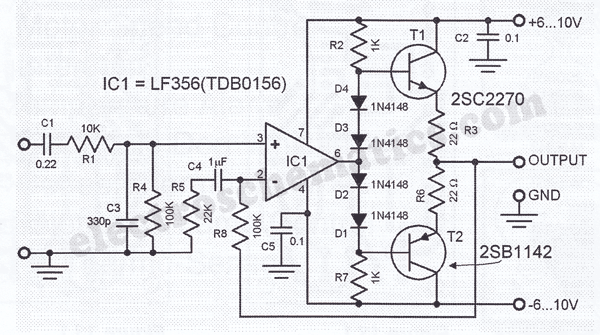Matador
Well-known member
Any reason to not use a dedicated headphone driver IC, like the TPA122?
perhaps OK for modest power into 32 ohm cans, but won't melt ear wax at 600 ohms with a 6V max power supply.Any reason to not use a dedicated headphone driver IC, like the TPA122?
Yes please,
Cheers
Ian

In this instance the actual phones are specified as 63 ohms at 1KHz and a sensitivity of 106dB/mW.You need to be clear what kind of headphone you want to drive.
now you tell us... that makes it easier.In this instance the actual phones are specified as 63 ohms at 1KHz and a sensitivity of 106dB/mW.
Cheers
Ian
That's what the customer told me based on the phones he plans to use. I had to trawl through a large number of emails to find the one where he told me thatnow you tell us... that makes it easier.
JR
Heck - a little CMoy can handle those --That's what the customer told me based on the phones he plans to use. I had to trawl through a large number of emails to find the one where he told me that
Cheers
Ian
In this instance the actual phones are specified as 63 ohms at 1KHz and a sensitivity of 106dB/mW.

Any reason to not use a dedicated headphone driver IC, like the TPA122?
-An op amp trick that I never used but many have written about over the years, an IC driver can be tricked to operate class A by hanging a resistor to one rail or the other from the output.

This could perhaps improve one of the modern canned headphone amp ICs.
Trying not to feed this veer that I am apparently feeding, yes the low voltage parts are CMOS, but some of the others parts discussed are clearly bipolar with probably class A/B output stages inside.
 for a tiny system (fraction of a credit card) that can run via a small step-up switcher and charger IC with a single 3.7V Lipo Cell (which it can change from USB) for a complete headphone Amp with enough output for most sensible headphones, 1uV self noise and tripple zero THD. With under 5 USD BOM without Lipo battery.
for a tiny system (fraction of a credit card) that can run via a small step-up switcher and charger IC with a single 3.7V Lipo Cell (which it can change from USB) for a complete headphone Amp with enough output for most sensible headphones, 1uV self noise and tripple zero THD. With under 5 USD BOM without Lipo battery. switches and a 95 step 1dB per stepped attenuator IC and a Quad Op-Amp (OPA1679) are above.
switches and a 95 step 1dB per stepped attenuator IC and a Quad Op-Amp (OPA1679) are above.I did a build on veroboard based on the CMoy except with an OPA2134 on the front end with a single NJM4556 driving the output. Admittedly, I only had 250-600 ohm cans available for testing, but it sounded good to my ears.
The thing I like about the buffer chips is that you can wrap them inside the feedback loop of an opamp and they take care of all the mess of biasing an output stage for you plus you get built in protection.
You could always do a BD139/BD140 based output stage too. CAPI does a headphone amp that uses a TIP41/TIP42 pair with an OPA134 driver.
I know I have seen several designs based on similar topologies so a current boosted opamp is a sensible approach to drive most headphones.
 Many excellent reviews and tests and awards... iFi Zen CAN.
Many excellent reviews and tests and awards... iFi Zen CAN. 
Thanks for the offer of NJM4556s. They seem to be used in many headphone amp designs and are mostly well liked. (Thor has very special ears).I really do not care what pair of cans you're listening with. Continuing down this path and this will turn into nothing more than a mess of a thread with no clear end. At the end of the day what is going to matter is which set of compromises best suit the requirement (power, space, cost, etc...).
Ruffrecords mentioned he was looking for some NJM4556s. I happen to have some on hand and am willing to part with them, and subjectively I do not mind their sound. They are at least worth a try as they may or may not be adequate. All I did was offer some viable and simple methods of constructing a headphone amp. That is all. No need to interject your opinion on everyone's post with your two cents.